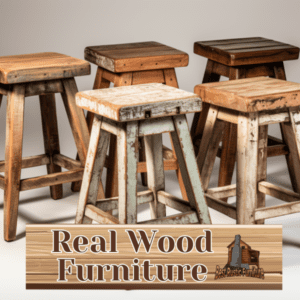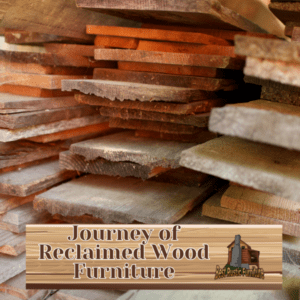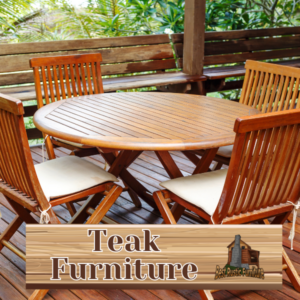
There is something undeniably charming about the Weathered Look. It’s a style that transcends time and trends, evoking a sense of nostalgia and warmth. By embracing the natural aging process of various surfaces, particularly wood, we can add character and rustic charm to our homes. In this article, we’ll explore the enduring appeal of the Weathered Look and provide tips on how to achieve it in your own home.
Key Takeaways:
- The Weathered Look adds character and rustic charm to various surfaces, particularly wood.
- Embracing imperfections and signs of age can create a warm and inviting atmosphere in your home.
- There are various techniques, including painting and staining, that can be used to achieve the Weathered Look.
- With proper maintenance, Weathered Look surfaces and furniture can stay beautiful for years to come.
- The Weathered Look continues to captivate homeowners and designers alike with its timeless appeal.
Creating a Weathered Look: Painting Techniques
If you’re looking to add some rustic charm to your furniture or decor, creating a weathered look through painting techniques is an easy and fun project. Here are some painting techniques to achieve that weathered look with ease.
Dry Brushing
Dry brushing is a technique that creates a subtle, worn effect on your piece. Start by lightly dipping your brush into the paint, then wipe off any excess on a rag or paper towel. Next, apply the paint in a back and forth motion on your piece, making sure to leave some areas exposed. This technique works best with a light hand and can be built up in layers for a more pronounced effect.
Distressing
Distressing is another great way to achieve that weathered look. This technique involves sanding down the paint in certain areas to reveal the wood or previous layers of paint beneath. Use a fine grit sandpaper and sand along the edges and corners of your piece, as well as any areas where natural wear and tear would occur. This technique works best with chalk paint or latex paint.
Layering Colors
Layering colors can create a more complex weathered look. Start by applying a base coat in a color of your choice, then let it dry completely. Next, apply a second coat in a different color and let it dry partially. Using a damp rag, gently wipe away some of the paint in areas where natural wear and tear would occur. You can repeat this process with additional coats of paint to build up the effect.
Finishing Touches
Once you’ve achieved your desired weathered look, it’s important to finish your piece with the right techniques. For a more natural finish, use a wax or polyurethane to protect the paint and add a subtle sheen. For a more pronounced effect, lightly sand the edges and corners again after the wax or polyurethane has dried. Additionally, consider adding hardware such as vintage knobs or drawer pulls to complete the look.
Creating a weathered look with painting techniques is an easy and fun project for any DIY enthusiast. With the right methods and materials, you can bring a touch of rustic charm to your home decor and furniture.
Weathered Wood: Staining and Whitewashing
Transforming plain wood into weathered wood is a great way to add character to any piece of furniture or surface. With staining and whitewashing techniques, you can easily achieve the desired weathered effect. Follow our step-by-step tutorial to get started.
Materials Needed:
- Weathered wood stain or whitewash
- Clean rag
- Fine grit sandpaper
Step-by-Step Tutorial:
- Choose the right stain or whitewash for your project. Weathered wood stain in shades of gray or brown are perfect for achieving the weathered look. Alternatively, white or gray paint mixed with water can be used as a whitewash.
- Prepare the wood by sanding it with fine grit sandpaper. This will ensure that the stain or whitewash adheres properly to the surface.
- Apply the weathered wood stain or whitewash with a clean rag, working in the direction of the grain. Apply as much or as little as you like, depending on the level of weathering you want to achieve.
- Allow the stain or whitewash to dry completely, following the manufacturer’s instructions.
- If you want a darker or more weathered look, repeat steps 3-4 until you achieve the desired effect.
- Finish the weathered wood by sanding it lightly with fine grit sandpaper to distress it further. You can also use a dry brush dipped in gray paint to add some variation.
- Protect the weathered wood with a coat of polyurethane or wax, if desired.
Now that you know how to achieve a weathered wood look, you can repurpose any piece of furniture or DIY project with ease. Add some rustic charm to your home with this simple yet effective technique.
Weathering Techniques for Different Surfaces
While weathered wood finishes may be the most popular, you can also use paint and stain to create a distressed look on various surfaces.
If you’re looking to repurpose a piece of furniture, consider giving it a weathered look with paint. Latex paint can be distressed with sandpaper, a dry brush, or even a rag to achieve the desired effect. Layering different colors of paint can add depth and variation to the finish.
If you’re working with metal or plastic, consider using a spray paint or a special paint designed for those surfaces. Apply a layer of paint, let it dry, and then sand or distress the surface to reveal hints of the base material.
Even fabric can be given a weathered look with the right techniques. Use a fine-grit sandpaper or a wire brush to create small tears and snags in the fabric, giving it a distressed appearance. You can also use gray or brown paint to create a vintage appeal on fabric.
| Surface Types | Weathering Techniques |
|---|---|
| Wood | Staining, whitewashing, dry brushing, layering colors |
| Metal | Spray painting, distressing with sandpaper or wire brush |
| Plastic | Special paint designed for plastic, distressing with sandpaper or wire brush |
| Fabric | Distressing with fine-grit sandpaper or wire brush, painting with gray or brown paint |
Whether you’re decorating a room or repurposing a piece of furniture, incorporating a weathered look can add character and charm to any space.
The Easy Weathered Look: Quick and Simple Projects
If you’re looking for a fun and easy DIY project that can be completed in just a few steps, then creating a weathered look is perfect for you. Whether you’re repurposing a piece of furniture or adding some rustic charm to your home decor, achieving this look is quick and simple.
Here’s a step-by-step tutorial for an easy weathered look:
- Pick a paint color that matches the style and decor of your space. Shades of gray are popular for weathered effects.
- Apply a base coat of paint to your surface and let it dry completely.
- Using an old brush or dry brush technique, add a layer of a darker shade of paint to create variation.
- If desired, distress the surface with sandpaper to create an even more weathered appearance.
- Apply a coat of wax or polyurethane to protect the surface and add dimension.
With these easy steps, you can transform a piece of furniture or even create weathered wall art. This is a great project for beginners, and can be completed in just a few hours. Try it out and have fun!
Weathered Look: Tips and Tricks
Creating a weathered look on your furniture or other surfaces is all about layering and variation. If you’re looking for a darker, more distressed look, start with a coat of latex paint in a color you didn’t want. Let it dry, then add a second coat in a color you don’t mind seeing in small amounts. While the second coat is still wet, use an old rag to rub off some of the paint, exposing the first coat underneath.
If you want to add even more variation, use a dry brush or grit sandpaper to add texture. To make the process much easier, add more paint to the brush or sandpaper after a few strokes, making sure to blend the colors as you go. If you’re going for a lighter, more subtle weathered look, try using a gray paint or stain, and rubbing it off with a rag.
Remember, the first step to achieving the perfect weathered look is to experiment and have fun. Don’t be afraid to try different techniques, or to mix and match different colors and finishes. And if you don’t get the look you want on the first try, don’t forget that it’s easy to sand down and start over.
When you’re happy with the final result, protect your weathered finish with a coat of wax or polyurethane. And good luck with your next weathering project!
Weathered Look Inspiration: Decor Ideas
Bringing weathered elements into your living space is a great way to create a warm, rustic feel. Rustic hardware, vintage pieces, and weathered decor can help give your living room a unique flair. One great resource for finding weathered furniture and decor ideas is Pinterest. You’ll find a vast array of pins and inspiration on creating the perfect weathered living room look.
Don’t forget the power of affiliate links. Many bloggers and influencers share links to their favorite weathered decor and furniture pieces. Following them is an easy and fun way to find new ideas and products for giving your living space a weathered look.
If you’re looking to incorporate more weathered decor in your living room, try adding a coffee table with a weathered wood finish. This is a perfect way to repurpose an old piece of furniture and add character to the room.
When decorating with a weathered look in mind, remember to keep it simple and understated. Too much weathered decor can make a room look cluttered and chaotic. Instead, focus on incorporating a few key pieces and accents.
Hardware is an excellent way to give furniture a weathered look. The right knobs and handles can instantly transform an old dresser or cabinet.
So, give your living room a cozy, rustic feel by incorporating weathered decor and furniture. With a few well-placed pieces, you can create a unique and inviting space that has that perfect weathered charm.
Weathered Look Maintenance: Keeping the Charm Alive
Now that you’ve achieved the weathered look, it’s important to know how to maintain its charm. Here are some tips to help you keep your weathered surfaces and furniture looking beautiful:
| Tip | Description |
|---|---|
| Protect with Polyurethane | Apply a coat of polyurethane to protect your weathered surface from scratches and stains. This will also help to preserve the color and texture of the surface for longer. |
| Repurpose | Give your weathered piece of furniture or decor a new purpose to keep it fresh and interesting. For example, an old wooden ladder can be turned into a bookshelf or a towel rack. |
| Decorate with Hardware | Add some hardware to your weathered piece of furniture or decor to give it a new look. For example, replacing the knobs on a weathered dresser can give it a fresh and updated feel. |
| Maintain with Regular Cleaning | Clean your weathered surface or furniture regularly to prevent dirt and grime buildup. Use a soft cloth and non-abrasive cleaner to avoid damaging the surface. |
Remember, maintaining the weathered look is all about preserving its character and charm. With these tips, you can ensure your weathered surfaces and furniture remain beautiful for years to come.
And don’t forget to sign up for our newsletter for more weathered look inspiration and tutorials on how to maintain and repurpose your favorite pieces of weathered decor!
Embracing Imperfections: The Beauty of Weathered Look
The weathered look is not just a trend that will soon fade away. It is a timeless style that will always have a place in our hearts and homes. The beauty of weathered elements lies in their imperfections and the character they bring. Weathered paint look and vintage appeal can make a space feel cozier and more inviting.
Age translates to character, and that is never truer than with weathered elements. It is the nicks, dings, and faded finishes that tell a story and add personality to a piece. These imperfections show that an item has been well-loved and used, which makes it all the more special.
Many designers and homeowners have fallen in love with the rustic charm of the weathered look. They use it to give their home decor a unique, personalized touch. Whether through repurposed furniture or vintage accessories, incorporating weathered elements into your decor can add an air of nostalgia and warmth.
Character is essential to any space. It’s what makes a house feel like a home. The weathered look not only helps you achieve that but also allows you to embrace the beauty of imperfections. Don’t be afraid to mix and match styles and finishes. A little bit of wear and tear can go a long way towards creating a space that feels lived-in and loved.
Conclusion
In conclusion, the weathered look is more than just a trend. It’s a timeless style that infuses any space with rustic charm, character, and a sense of history. Whether you achieve it through paint and stain techniques, or by embracing the natural aging process, the weathered look can add warmth and depth to any room in your home. By incorporating weathered elements into our decor, we can create a unique and inviting atmosphere that reflects our personal style. And once you’ve achieved the weathered look, it’s important to maintain its charm with regular cleaning and protection. So why not embrace the imperfections and age translates to character of weathered surfaces and furniture, and give your home a vintage appeal that never goes out of style? With these tips and tricks, you’ll be well on your way to creating a space that’s as unique and timeless as you are.
FAQ
What is the weathered look?
The weathered look refers to the aesthetic of surfaces, particularly wood, that have aged over time, resulting in a rustic charm and character.
How can I create a weathered look on my furniture?
There are several painting techniques you can use, such as distressing, dry brushing, and layering colors. Finishes like wax and polyurethane can also give your furniture a weathered appearance.
How do I achieve a weathered wood effect?
You can achieve a weathered wood effect by using staining or whitewashing techniques. Choose the right stain or whitewash, prepare the wood, and follow a step-by-step process to achieve the desired weathered effect.
Can I achieve a weathered look on surfaces other than wood?
Yes, you can use weathering techniques on surfaces like metal, plastic, and even fabric. These techniques can help you give new life to old furniture or create weathered accents in your home decor.
Do you have any quick and easy weathered look projects?
Absolutely! We have some simple DIY projects that are perfect for beginners and can be completed in no time. From transforming furniture to creating weathered wall art, these projects are fun and easy.
Are there any tips and tricks for achieving the perfect weathered look?
Yes! We have valuable tips and tricks to enhance your weathering projects. Learn how to achieve the perfect layering and variations in color, troubleshoot common issues, and more.
Can you provide some weathered look decor ideas?
Certainly! We have inspiration for incorporating the weathered look into various rooms in your home. Discover tips on incorporating weathered elements into your living room, bedroom, kitchen, and more.
How do I maintain the weathered look?
To keep the charm of the weathered look alive, it’s important to know how to clean, protect, and refresh weathered surfaces and furniture. We’ll provide tips on maintaining the beauty of your weathered pieces.
What is the appeal of the weathered look?
The weathered look offers a timeless, rustic charm that adds character to your home. It embraces imperfections and aging, creating a warm and inviting atmosphere.
Why should I embrace the weathered look?
Embracing the weathered look allows you to infuse your space with character and create a unique atmosphere. It celebrates the beauty of age and translates it into a vintage appeal.
Conclusion
The weathered look continues to captivate with its timeless, rustic charm and character. By embracing this aesthetic, you can create a truly unique and inviting atmosphere in your home.






